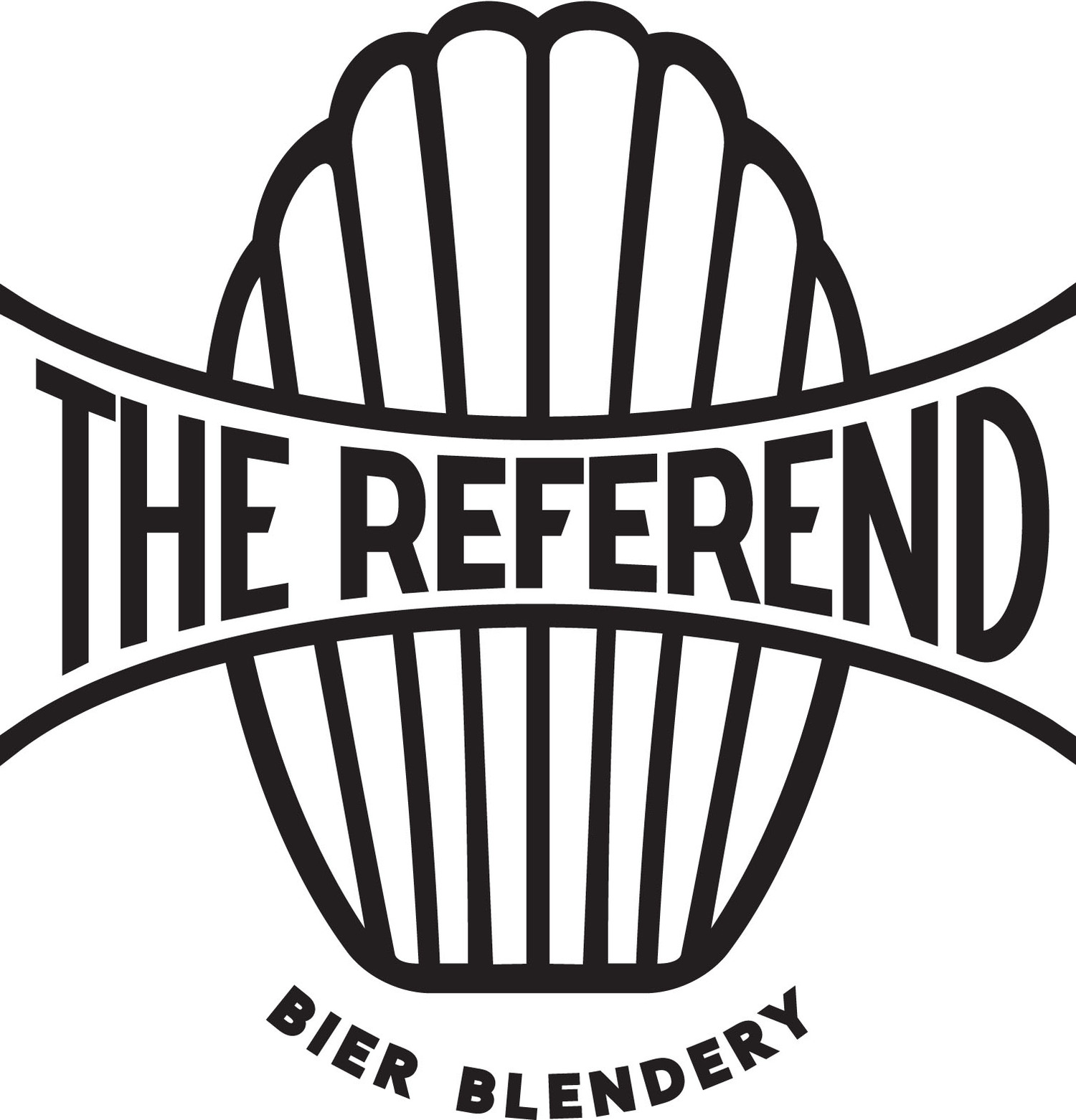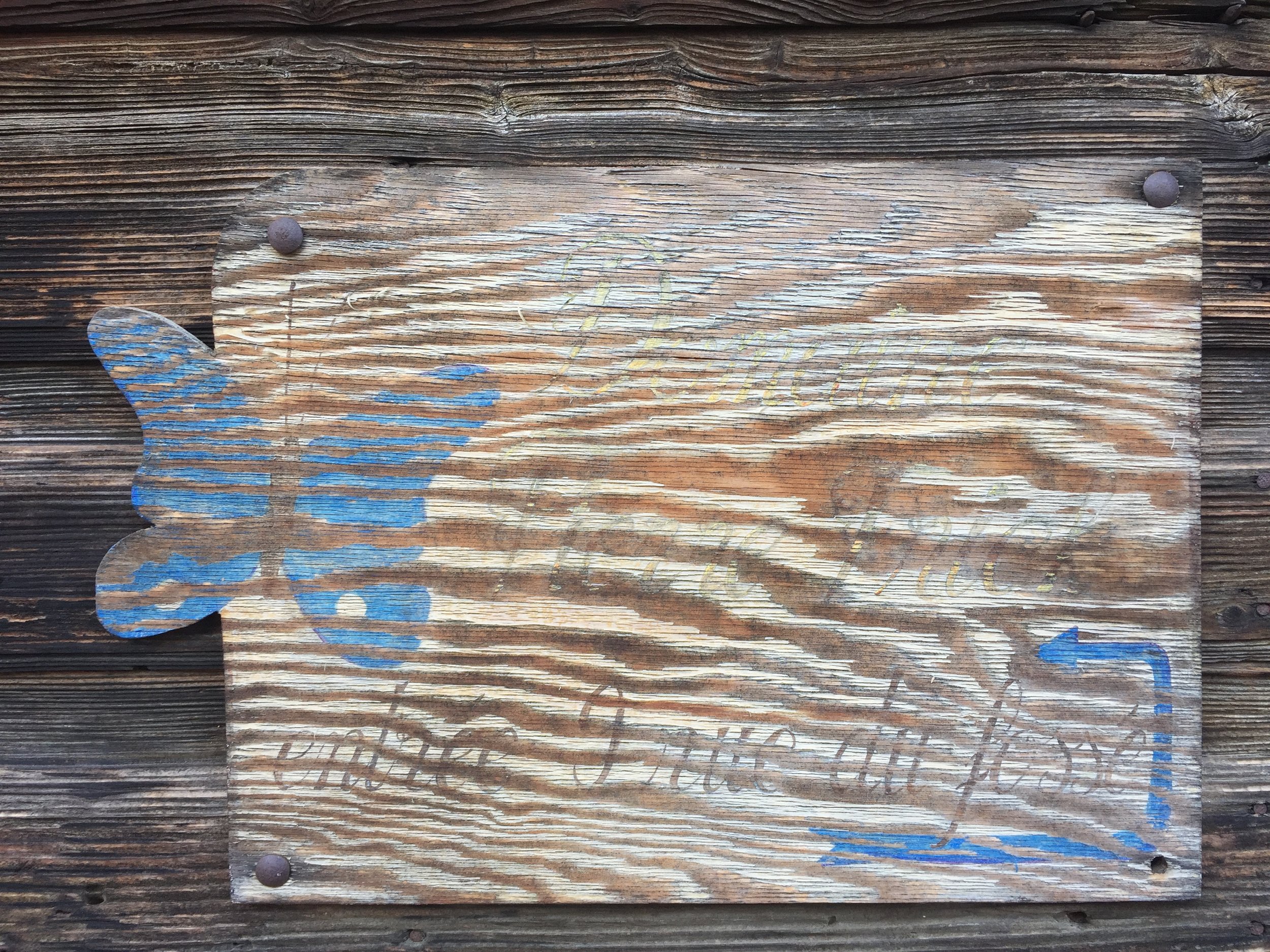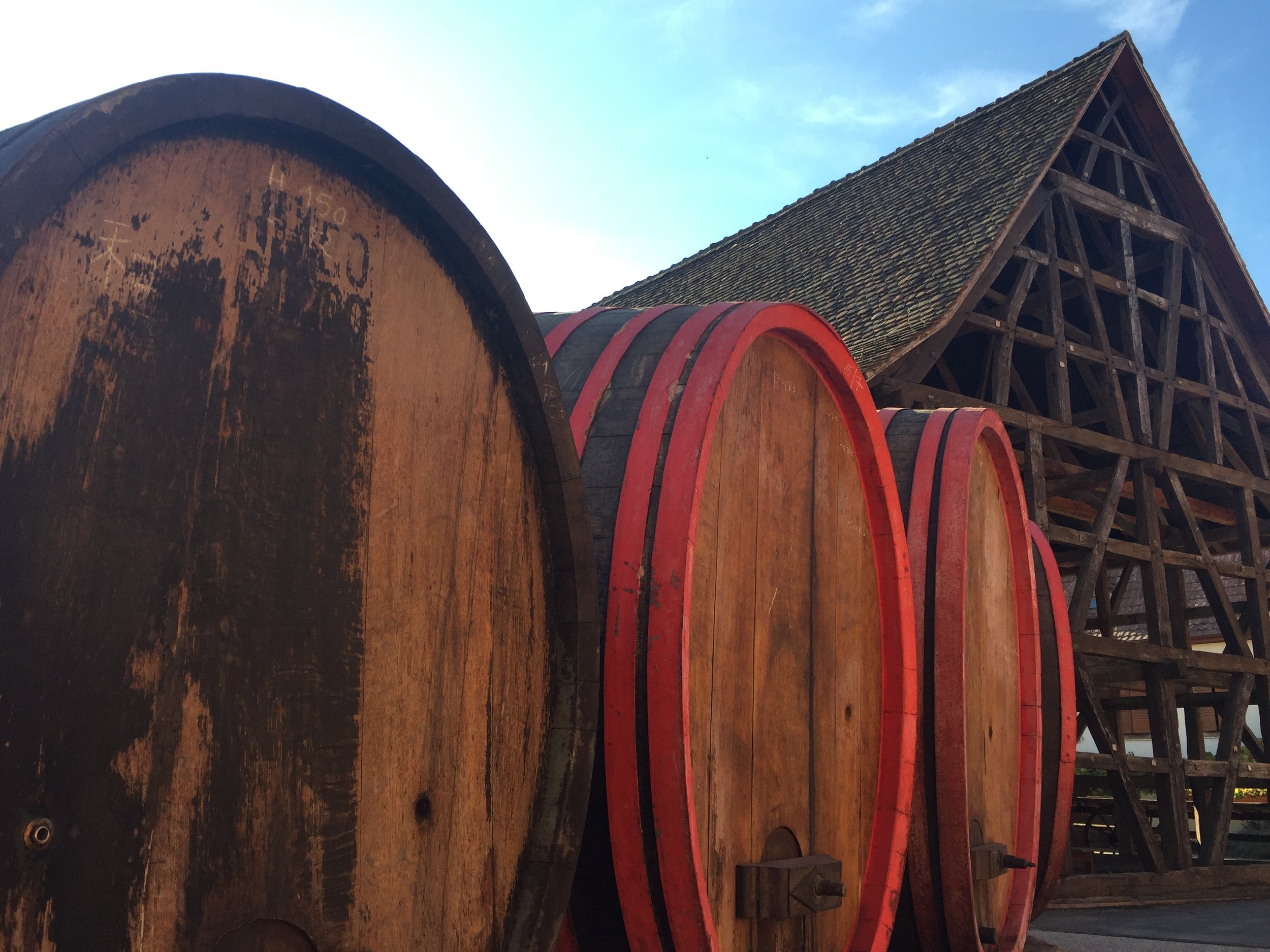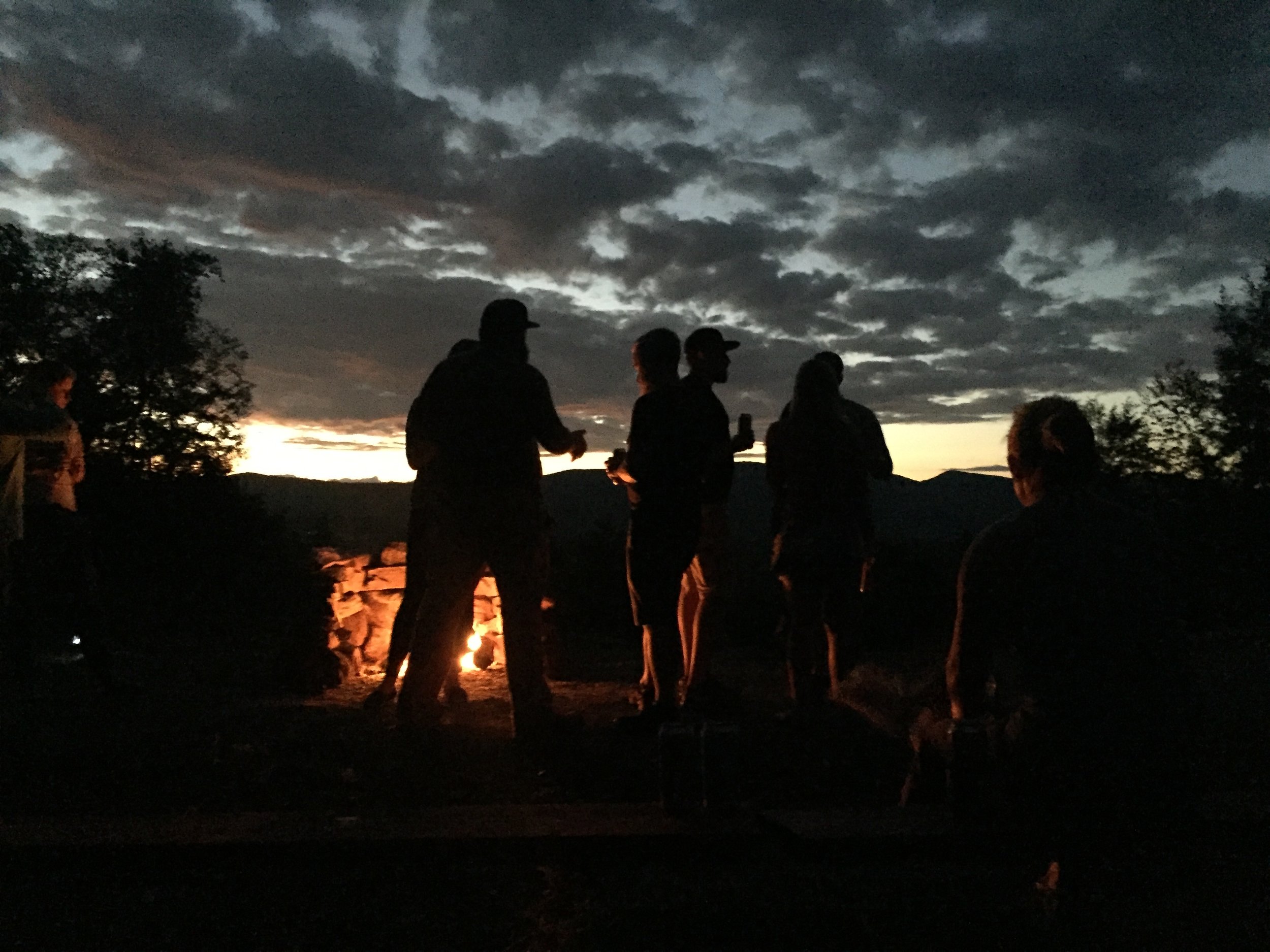The year, the year is gathering
/The criterion common to all of these remembrances is that they enriched the vision of what it is we’re trying to do at The Referend. They are, in a word, inspirational; the sources from which we’ve drawn and will continue to draw through our years here as brewers, community members, producers of natural goods, plain people.
All undoubtedly deserved their own posts, but the year being as busy as it was we needed to act without consistent reflection and presentation. We’re catching up here with ten guiding gatherings.
VISITING
Brasserie Fantôme
Our first completed (released) collaboration, we spent a snowy day in the Ardennes with Dany Prignon of Brasserie Fantôme, who has been brewing as long as I’ve been alive. He is a magician of the highest order. He is that purest artist whose work forces you to reconsider the bounds of what you’ve called artistry. He hates business and businessmen, quite naturally in this house of the ghost, for the businessman is body without spirit.
“The ghost never gives up his secrets,” read the old imported Fantome labels, so we’ve signed on as protectorate of this recipe, saying only that Blanchot was based upon Dany’s old “Blanche” recipe, with the gravity bumped up nearer to his saison range, and included a number of spices grown locally to us that we prepared for the journey and brought to Soy in our luggage. Very secret spices.
Antidoot - Wilde Fermenten
We have no photographs from our visit to Antidoot because we were having too good a time to think of visual posterity. Tom Jacobs has built a brewery beside his home, modest in size and rich in genuine creativity and thoughtful principles. All those affinities we talk about with beers of spontaneous fermentation—the natural wines, dry wild ciders, forgotten beer styles—Antidoot is designed (with vineyard, herb garden, and koelschip) to explore them all, as well as the interrelatedness between them. Paired with the chicken soup (raised by the family, slaughtered for the family, enjoyed by the family and we lucky visitors) were bottles of cider, gruit, wine, and a particularly beguiling apricot oud bruin, all executed with the same commitment to minimal intervention to real ingredients and their respective wild fermentations. Tom and his wife, Kristien Justaert, are both philosophers (actual philosophers, not craft beer philosophers), and it shows in all the work they do, if you’re paying attention.
In the spring, I read Kristien’s Theology After Deleuze during a brewday or two, and found this passage of hers that serves so many of our discussions of process, the natural, spontaneous creatio ex […] : “this ‘marginal god’, or ‘micro-god’, animates all creative becomings in the universe that is more like a pluriverse…this micro-god is a god-as-process: it influences the ecology around it but it is also changed by the environment; it has a relational structure, like all healthy ecological relations.”
The first commercial releases from Antidoot are available now (a friend brought one to our anniversary party earlier this month—an absolutely stunning cider), and I’m going out on the sturdiest limb in saying you should seek these out.
Pierre Frick
I was late to a wedding rehearsal because one does not turn down foudre samples from the Frick cellars. Such, at least, are my troubled priorities. The first thing I tasted were the thick, primary Gewürztraminer lees from a freshly racked foudre that Jean-Pierre was cleaning that day. The kind of yeast that is neither liquid nor solid, the kind of yeast I had never thought to try on its own to better know the young wine, its health and direction. Was it delicious? I am uncertain. But it changed my life.
We tasted through the wines in-process & in-foudre: Sylvaner, Riesling, Pinot Gris, Pinot Blanc, Auxerrois, Muscat, discussing along the way the path each wine would take on its way to becoming. As usual with producers committed to creating pure process wines, vinification is usually a question of being more meticulous, more trusting of the yeast.
Jean-Pierre refers to lambic beers as beers of bacterial fermentation, which, in contrast to his (or most) natural wines, holds true as differentiation: lambic beers have a decidedly higher bacterial contribution to character. Interestingly, I was talking with a lambic producer about our Berliner Messe process of spontaneous acidification, who was concerned about this yielding “a bacterial fermentation,” which, of course, it does, by design and to an even greater degree than their lambics, our golden ales.
PARTIES
Far & Away
We had the honor of pouring alongside some of our favorite breweries in the country at Half Acre’s Far & Away festival situated above Millennium Park in Chicago. We proffered Gloria: Grand Cru and Tender Buttons for all the good people of Chicago on a brisk but sunny day warmed by mind-bending coffee and sausages and the best beer imaginable under one tented roof.
La Percée du Vin Jaune
Every February a whole town of the Jura gets shut down and transformed into festival grounds to celebrate the new vintage of vin jaune. Except in the case of vin jaune, the new vintage comes from seven years prior, as vin jaune spends a minimum of six years and two months in oak, without topping, under flor, typically in dry surface cellars, to create the yellow hue and fine oxidation with high acid that in turn give vin jaune its cellar life that is unparalleled in all the unfortified wines.
Jura loves its idiosyncratic wines, whether the traditional vin jaune and cousin savagnin non ouillé, and has slowly emerged over the past thirty years as a hotbed of natural wine production, primarily out of the early work of Pierre Overnoy. But vin jaune and its patient process and distinct profile remain the jewel of the region, and it shows in the attendance of this festival. The town fills up, private garages become tasting rooms for pours of vins de paille, crémant, macvin, poulsard, the streetsounds become winedrunk and tupperwares of Comté cheese are extended freely across language barriers. Six years is a long time, but it will be far longer before we learn to attain such festive heights here in America.
Fall Fermentation Festival
Common Roots, of South Glens Falls, NY, invited us up to their annual Fall Fermentation Festival, in which breweries from the region and beyond pour the results of their forays into wild fermentations. As is evident from some of these 2018 memories, we too often fall into the trap of glamorizing what is distant, exotic, or other, so this was a wonderful opportunity to meet so many of our neighbors working on beers that make broad allowances for the natural influences of yeast. There are important things happening here.
Brews for New Avenues
Plentiful lambic (and lambic by (m)any other names) and many stellar beers and ciders besides, all exclusively in support of New Avenues’ fight against youth homelessness makes for the best-feeling beer event active in the world today. We were excited to participate and are even more excited to participate next year after seeing how well-executed this festival is, and that it is put on by the finest people. The cause, of course, remains as important as ever.
We made side trips to De Garde, Ale Apothecary, and Logsdon, as one does when visiting the region, and each needs its own separate entry or blog post. Probably for 2019. So many people to learn from.
AT HOME
Growing the Team
Early on, we (I) suffered the delusion that this operation could very nearly be a solo endeavor. Mitch & Melissa have been here to disprove that since day zero, but now Tom has been helping wort become beer and barrels become blends and blends become bottles for a year. And more recently we’ve been joined in all our strategic taste developments by Amy’s guiding synaesthetic palate and Brian’s innate grace. If you’ve been into the tasting room in past months, you’ve almost certainly met them, and if not: swing by and tell them about the weirdest beverage you’ve enjoyed recently. They genuinely love these conversations. We tell them as often as possible, but we appreciate the hell out of the work they do here, and wanted you to know as well.
The Labor of our Fruits
This year, exclusive of our Niagara (ON) icewine juice from the first week of 2018, all of our fruit was sourced from New Jersey, New York, Pennsylvania, and Delaware (or: New Jersey and its neighboring states).
Almost 18,000 pounds of real fruit from real farms operated by real farmers, harvested (you and we should always be aware) most commonly by the deft hands of recent immigrants to the country.
We continue to source our fruit with care, sort (triage) for quality ourselves, make any needed preparations or processing to the fruit (destemming, quartering, destoning, crushing, desiccating, etc.). We have never added to our beer any fruit that comes to us artificially preserved or pasteurized, transported across the country or world in a mylar bag. Why would we ever.
These fruits are delicate and somewhat unpredictable, but they are real.
In the American Grain part two
Our first blog post here was on our scythe-harvested local organic spelt. I haven’t yet gotten the scythe blade replaced to carry on those antiquated efforts, but this year I was briefly entrusted with the wheel of the combine at Rabbit Hill Farms for a lap around the wheat plot in Shiloh, NJ.
Our commitment is to use 100% state-grown grain, which we have accomplished for over a year now. Right around the time we were trying to get our blendery open, Hillary and Blair were converting their South Jersey family farm to a full-fledged malting operation, growing their own grain and floor-malting on-site. They have made it very easy for us to realize our simultaneous commitments to quality and support of the local agricultural economy.
It has been a year of finding our friends, learning that we are not so alone in whatever strangenesses we pursue. We’re grateful to them (all of them, including the many not listed above) and to everyone who supports such quality-obsessed producers the world over.


























